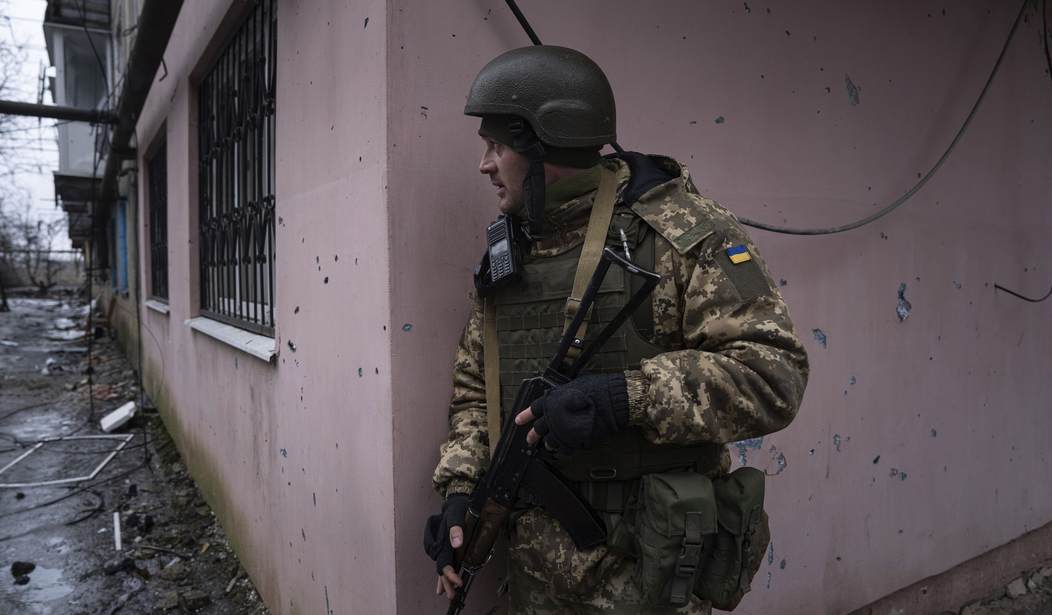March 2022's Ukraine war videos of exploding Russian tanks showed the world that Ukrainian soldiers armed with modern anti-tank weapons knew how to ambush and destroy Russia's mightiest armored fighting vehicles.
Wire service photos of Russian vehicle graveyards confirmed Ukrainian military units knew how to defeat and destroy entire Russian military units -- entire formations, not just individual tanks.
Burnt-out tanks smashed armored infantry carriers, abandoned self-propelled anti-aircraft and artillery vehicles, scores of shrapnel-riddled trucks -- the photos showed the metal bones of a Russian armored BTG (Battalion Task Group).
In February 2022, Russia fielded an estimated 170 BTGs. With these allegedly modern combined arms units, Vladimir Putin believed Ukraine would quickly submit to a Russian blitzkrieg.
For many reasons, with the Ukrainian will to win and tactical training in the top five, Putin's invasion stalled and then collapsed. By midsummer Ukrainian local combined arms attacks had forced Russian retreats.
Combined arms. Alexander the Great used the concept, of coordinating Macedonian cavalry, heavy infantry, and quick light infantry maneuver and attacks. Napoleon combined infantry, cavalry, and artillery. German WWII panzer divisions combined tanks, armored infantry (panzer grenadiers), mobile artillery, and air attacks (close air support of ground forces).
Recommended
The U.S. Army and Army Air Corps of 1944 were very good at combined arms warfare. The December 1944 attacks of 4th Armored Division's Combat Command Reserve (CCR) to relieve Bastogne are an excellent example of combined arms warfare.
Led by Lieutenant-Colonel Creighton Abrams, commanding the 37th Tank Battalion (the M1 Abrams tank is his namesake) and by Lieutenant-Colonel George Jaques commanding the 53d Armored Infantry Battalion (WWII lingo for infantry mounted on half tracks), CCR was a small and understrength brigade. But Abrams and Jaques combined the 37th's three tank companies with the 53rd's three armored infantry companies, forming three combined arms armored teams.
With the 94th Armored Field Artillery Battalion in close support, Teams A, B, and C fought a series of small but vicious little battles until CCR reached Assenois, four miles from Bastogne. After a massive artillery preparation, Team C broke through to relieve the 101st Airborne.
The point relevant to Ukraine: Abrams' tanks didn't fight without Jaques' infantry, and in an offensive operation, smart infantry commanders didn't fight without tank support. Successful armored operations require well-trained infantry eyes and infantry weapons to protect the tanks from cheap shots and help the tankers identify targets.
With infantry support, tankers can concentrate their vehicles' enormous firepower and maneuverability on breaking through enemy defenses.
In the complete 21st-century U.S.-style mechanized attack, artillery fire, air support (fixed-wing, helicopter, and drone) and space support identify, suppress, and very often destroy enemy units attempting to regroup or counterattack.
However, successfully conducting an armored attack's violent ballet of tanks, infantry, air, and artillery fire takes intensive training. The Russian soldiers in the BTGs, if they ever got that message, never got the training.
Last year the usual ignorant media briefly claimed, "the tank is dead." Fortunately, those claims disappeared. One reason: video of Ukrainians using tanks in successful counterattacks. Real experts pointed out that the Ukrainians understood combined arms warfare.
In November 2022 Seth Jones of the Center for Strategic and International Studies wrote: "The Ukrainian military has effectively integrated drones into combined arms warfare" and they are "particularly valuable in a contested environment to improve battlefield awareness without risking loss of life."
Ukrainian small units knew tanks needed fuel. StrategyPage.com wrote that Ukrainians focused on attacking "supply trucks and vehicles transporting maintenance personnel." As a result, Russian combat vehicles "could not refuel." Stalled on the road, Ukrainian anti-tank teams and artillery decimated the Russian columns.
Western weapons mattered and still matter. The American-made Javelin anti-tank missile and Stinger anti-aircraft missile have performed superbly.
Ukrainian soldiers and their leaders know how to fight as combined arms teams. That's a huge edge.



















Join the conversation as a VIP Member